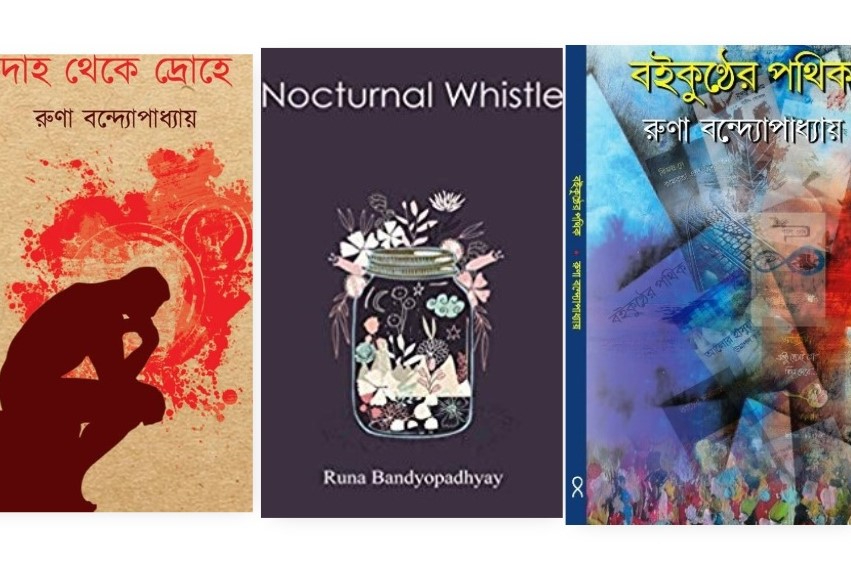A journey from real to unreal from living to un-living through Animals of Dawn
Read full review at Galatea Resurrects

A journey from real to unreal from living to un-living through Animals of Dawn
1.
It was a cold night of December 17th, 2016.The occasion was Kaurab International Reading Series at Kolkata, India. Poet Murat Nemet-Nejat was reading his new book length poem “Animals of Dawn”. Breaking the cover of oyster the pearl was engraving the architecture of animals, plants, speck of dust, dew, of dawn with colour and without colour. A purple grief from the surface of his realization was flying towards me from darkness to light, from real to unreal. A sinless tear was laughing on his sensitive lips as he was reading through the book. A terrible disaster flashed on my earlier realization of Hamlet. A new feeling started swinging at the confluence of appear-disappear myth.
Yes, this was the scene when I met poet Murat Nemet-Nejat with his “Animals of Dawn”. After the reading series I came back with the book and a resonating trace of emotion for Hamlet, a metaphor of the creation, desire of the poet. Then I started my reading. At the very beginning Murat’s desire zoomed in his voice,
I want to make Hamlet, to dis appear.
The lightning that didn’t strike made me disappear completely. (P-2)
When we start searching the concurrence between exterior and interior, when we understand that reasoning is so useless, scientific truths are not permanent, all relations are relative, every moment is changing with respect to me then we start jumping from our first life to second life (poet life). Here we see a journey of a poet to search the metaphor between void and non-void, real and unreal, living and un-living, sanity and insanity. Murat’s “Animals of Dawn” is not a comparison with Hamlet, but a metaphor.
2.
During my journey through “Animals of Dawn”, the first question triggers to my mind;Why Hamlet is the subject of “Animals of Dawn”? Why not the other plays of Shakespeare? The answer lies in the poet’s hunt for a definition of time. Hamlet is an act where time and consciousness play the major role throughout the act. Compression of time is a general characteristic of any play. But in Hamlet to achieve this compression time is not represented by concurrence of events. Rather a time gap is inserted as a significant duration. During this duration hamlet’s attitude towards time has changed. Apparently the movement of Hamlet may be in same pace with Claudius but his consciousness of duration makes him aware about his slowness. This duration is brilliantly implanted in “Animals of Dawn”. Its essence is reflected in the poet’s idea of horizontality of time. According to him time is defined by attention, not by memory, because memory is deceptive, therefore vertical. But attention has only intensity and duration, so horizontal, as Murat said vibrantly,
“All experience exists on a field possessing colorations collapsed onto a flat field. They – star like- flash at different times, captured by a solipsism of the mind’s attention, That discontinuous capture by mind of a point in a continuum – that is chaos – is what consciousness, a,k,a, time, is.” (P-39)
Hamlet is a story of moment. No past, no future. Hamlet’s hesitation increases the duration of the act, which is the subjective face of time and hence mind’s attention. As poet says brilliantly,
“In hamlet the distinctions in the structure of time isn’t between past, present and future, but in it’s passing; fast moving slow moving time” (P-47)
Let time be illusory. Wonder will see all boundaries are breaking away. If you tie up space-time, all laws of science will break down like breaking of first love with fencing. For the duality let’s go down to relativity through classical water-stair. Wonder will see infinite has held your finger.
The next characteristic is consciousness. How can we define it? Is it the soul as the poet defines it? According to Orch-OR (orchestrated objective reduction) theory of consciousness given by mathematician and physicist, Roger Penrose, “consciousness is derived from microtubules within brain cells (neurons) which are sites of quantum processing”. Again, as per spiritual belief the soul is immortal, death can’t destroy it. Then what about this consciousness? Does it exist even after our death?
Being a scientist I was searching the answer obviously through science. Not fully satisfied. Then “Animals of Dawn” pointed out to the bridge between science and Sufism. According to quantum theory there is a concept of quantum coherence. As Roger Penrose said,
“The brain’s material structure enfolds a quantum state at its most unimaginably sub-microscopic level. When not impinged upon by neurochemical activity in the surrounding tissue, the least excited state is preserved.”
